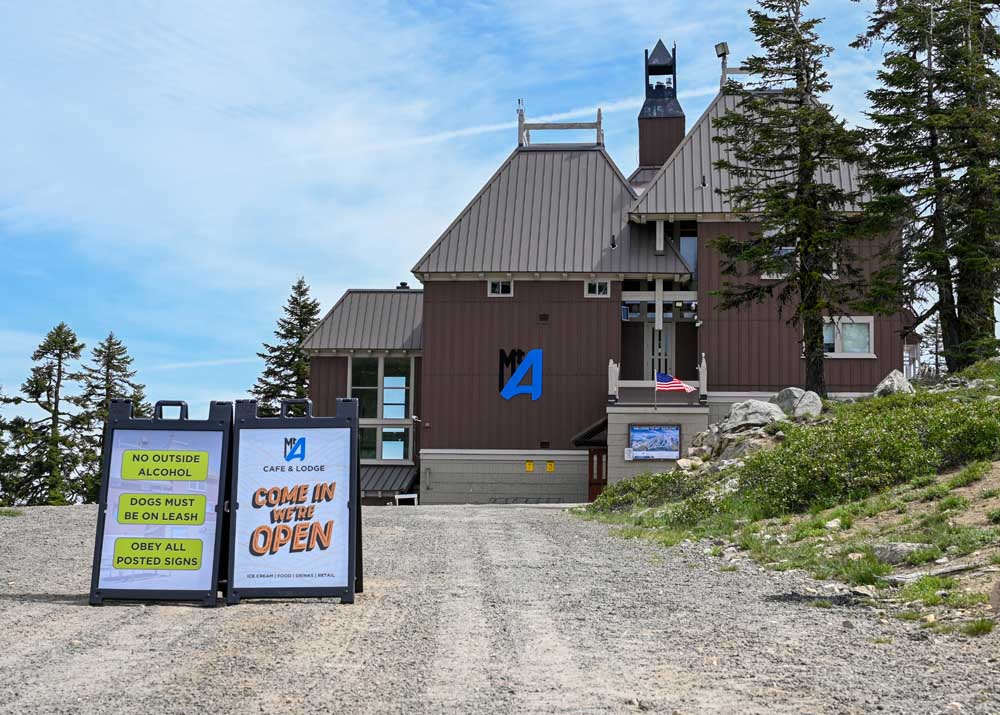Not ‘completely homeless,’ Prineville grad finds shelter in La Pine
Published 5:00 am Sunday, June 5, 2022

- faces of homelessness
Sharline and Katrina Greene sometimes finish each other’s sentences.
Trending
“We’re just having a hard time trying to find a place that’s …” Sharline, 18, began.
“Affordable,” her mother, 57, concluded.
Sharline Greene graduated from Prineville’s Pioneer Alternative High School earlier this school year in spite of a series of traumatic events. But now, though she and her mother don’t consider themselves “completely homeless,” the two are doubled-up with a friend of Katrina’s in La Pine, struggling to find a home they can afford as they try to find their way back to Prineville.
Trending
Sharline Greene did her freshman year at Crook County High School, but moved to Pioneer at the beginning of her sophomore year, taking a portion of her classes online.
But after her father died of cancer in November 2021, she stopped going to school altogether — and her father’s death upended the family’s housing situation.
The two had been living with Sharline’s father until Katrina’s hip surgery forced them to move to a family friend’s house. And when Sharline’s father died, his family wouldn’t let the two back onto his property, since he and Katrina weren’t married, Katrina said.
Back at school, administrators gave Sharline Greene a choice over her absences.
“They told me I have some choices: either come to school for a few hours a day, or I would have to go in truancy court,” Sharline said, referring to a unique and now-defunct alternative court program in Crook County. “I didn’t want to do that. Let’s do the other option.”
Later that fall, her choice paid off: She got both a modified diploma and her GED, thanks to Pioneer’s on-site GED testing option.
“I felt happy,” Sharline remembered, sitting in the sun at a picnic table on a recent sunny afternoon in La Pine. “I was excited I finally did it.”
Katrina remembers being “floored” when Sharline called to tell her she’d graduated.
“When she finally graduated — see, I’m going to tear up now — I was so, so happy for her,” Katrina remembered. “She finally did it — it paid off, all the years of crying and getting mad.”
Since graduation, Sharline has been babysitting off and on, but a steady job has been hard to find as she struggles to get copies of her birth certificate and Social Security card.
But after Sharline finished school, the challenges continued for the family’s housing situation. After two years, the family friend they’d been staying with in Prineville asked Sharline and Katrina to leave.
With most of the rest of their family in Idaho, Sharline and Katrina had nowhere else to go.
“I didn’t know what to do. I had to call on my friends and ask them for some money for a hotel room that night,” Sharline remembered. “But once we were able to get some sleep, then we ended up coming (to La Pine), and we’ve been here ever since.”
The home they’re now sharing in La Pine has been Sharline and Katrina’s respite since April — shelter, yes, but not a place to call their own.
It’s a position that some call a kind of “hidden homelessness,” being doubled up in someone else’s home. Government agencies are inconsistent about how they define homelessness: The nation’s official count of those experiencing homelessness doesn’t include those who are doubled up, but school officials do track the number of students who are.
The majority of students experiencing homelessness in Oregon are doubled up. In the 2019-2020 school year, the last time state data was available, 65% of Oregon’s homeless K-12 students fell into that category, including more than half of the 130 or so students experiencing homelessness in Crook County schools.
One challenge of doubling up is the reliance on another person for housing, where a change in the relationship between two people, or a whole host of other reasons someone might not be able to continue sheltering someone else in their home, could spell the sudden end of one’s housing without the protections of landlord-tenant law.
Katrina Greene acknowledges the precariousness of the family’s situation.
“I don’t consider myself totally homeless because we do have a roof over our head,” she said. “But then again, if we leave here, we will be totally just out there. We’ll be walking. It’s not a fun feeling, that’s for sure.”
Sharline and Katrina now plan on moving back to Prineville, but they aren’t sure how or when. Katrina is searching for a new job, having just gotten her driver’s license reinstated and wanting to leave the caregiving field. Housing they can afford has been hard to come by, and the search has been difficult while living in La Pine.
Sharline isn’t optimistic about their ability to find a place, but Katrina is slightly more hopeful about finding a home or rent-to-own opportunity as her job search continues. She says she’s been approved for down payment assistance but can’t use it without something to make a down payment on.
The median home price in Crook County was $394,000 in April, a 6.7% increase from the year before and a 32.2% increase from April 2020, according to this May’s Beacon Report.
“Yeah, at times I feel like it’s going to happen, and other times I feel like, ‘Why even try?’” Katrina said. “Basically because I’m not working. That’s my thing right now.”
Who are the real people impacted by skyrocketing housing prices, decisions about homeless shelters or plans to sweep informal camps? The Bulletin wants to offer insight by telling their stories through the series Faces of Homelessness. Every two weeks this year, Bulletin reporters will introduce readers to a different homeless person. We are here to tell their stories.
Are you a youth experiencing homelessness, or are you close to someone who is? Resources are available for housing, food assistance, clothing, health care and more in Central Oregon. For a list of some of those resources, go online to bendbulletin.us/youthresources.









